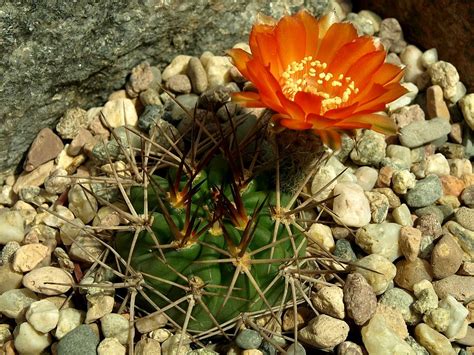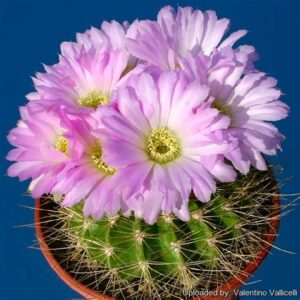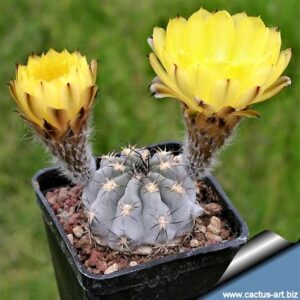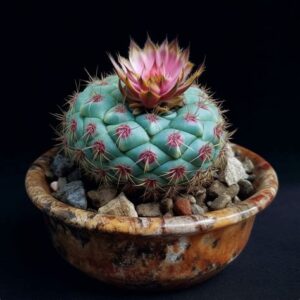Among the myriad of cacti species, the Acanthocalycium ferrari stands out as an extraordinary gem of nature. With its striking morphology and vibrant flowers, this cactus not only captivates the eye but also entices horticulturists and collectors alike. However, nurturing Acanthocalycium ferrari presents a unique set of challenges. Are you prepared to dive into the harmonious yet demanding world of this rare beauty?
Originating from the arid landscapes of South America, specifically Argentina, Acanthocalycium ferrari is characterized by its distinct ribbed surface and spines that provide both beauty and protection. Its geographical roots contribute to specific cultivation needs, making it an intriguing choice for any serious cactus enthusiast. So, what makes this species so special, and what are the essential pointers for its successful cultivation?
The essence of Acanthocalycium ferrari lies not only in its aesthetic appeal but also in its adaptability and hardiness. Belonging to the family Cactaceae, this genus is distinguished by its columnar forms and fleshy, photosynthetic tissues, which are finely tuned for survival in harsh climates. The captivating floral displays, featuring luminous yellow to orange flowers in high summer, emerge from the apex of the stem and serve to enhance its allure.
Understanding the anatomy of Acanthocalycium ferrari can immensely inform its culturing requirements.
Physical Characteristics: An Intricate Design
The Acanthocalycium ferrari showcases a variety of features that make it particularly noteworthy. Its stem is typically cylindrical, exhibiting pronounced ribs adorned with a plethora of spines. These spines vary in size and color, showcasing shades of yellow, white, or even crimson, depending on environmental conditions and maturity. Its compact form can reach heights of up to 15 centimeters and widths of approximately 10 centimeters, making it a perfect candidate for indoor cultivation or confined outdoor settings.
The flowers, while ephemeral, are a sensory extravaganza. They unfurl in a spectacular effusion of genteel petals, often being pollinator magnets. Flowering usually occurs in the early morning hours, this fleeting beauty lasts only a short time, yet it creates a lasting impression. Understanding the blooming cycle and triggers is crucial for those looking to coax a healthy display from their plants.
Having established a foundational understanding of Acanthocalycium ferrari’s physical characteristics, let’s delve into the specifics of care, environmental considerations, and potential challenges.
Creating the Perfect Habitat
Acanthocalycium ferrari thrives in conditions that mirror its native habitat. This means providing ample sunlight and favorable temperatures while imitating a well-draining soil composition. When cultivating this cactus, consider the following:
Light Requirements: As a sun-loving species, Acanthocalycium ferrari flourishes with full exposure to sunlight. Ideally, it requires about six hours of direct sunlight daily. Insufficient light can lead to etiolation, characterized by elongated stems lacking vibrancy. In contrast, too much direct, unfiltered sunlight can instigate sunburn, causing unsightly scorch marks on the plant. Finding a balance is crucial.
Soil Composition: A well-draining medium is vital for the health of this cactus. A blend of coarse sand, perlite, and potting soil can foster drainage, preventing waterlogging that can lead to rot. One can also incorporate pumice or volcanic rock to create a more aerated structure. Keep in mind, the pH level should ideally fall between 6.0 and 7.0 for optimal growth.
Watering Protocol: Acanthocalycium ferrari adheres to the mantra “less is more” regarding hydration. Overzealous watering can prompt root rot, so it’s crucial to maintain a careful schedule. Water thoroughly but infrequently, allowing the soil to dry out between waterings. In the growing season from spring to summer, increasing watering frequency is beneficial, but as the plant enters dormancy in the colder months, it should be watered sparingly.
If Acanthocalycium ferrari thrives in your care, you may be tempted to expand your collection. But what if your environment is not fully conducive to its needs? This challenge can form a pivotal moment in your cactus-rearing journey. Exploring alternatives to replicate its preferred conditions can not only bolster your skills but enhance your understanding of various cactus species.
Fostering Growth and Health
Once you’ve established an ideal environment, nurturing Acanthocalycium ferrari requires attention to several critical aspects:
Fertilization: During the active growing season, a balanced, diluted cactus fertilizer can encourage vigorous growth and flowering. Fertilizing in conjunction with watering every four to six weeks is beneficial, particularly when choosing a fertilizer low in nitrogen. However, it’s crucial to avoid over-fertilization, which can lead to unwanted growth spurts and decreased flower production.
Pest Management: Like many cacti, Acanthocalycium ferrari is susceptible to pests. Mealybugs and spider mites can pose significant threats, particularly when plants are stressed or improperly cared for. Regular inspections and, if necessary, the application of insecticidal soap or neem oil can help mitigate infestations. Ensuring good air circulation will also deter many unwanted pests.
Temperature Control: Acanthocalycium ferrari demonstrates resilience to heat but is less tolerant to frost. Ideally, it prefers temperatures between 20°C to 30°C during the growing season, while it can endure cooler temperatures down to 5°C during dormancy. Ensuring protection from sudden temperature drops by offering shelter in colder months can make a significant difference in its overall vitality.
Maintaining optimal conditions and being aware of the potential challenges will enhance your horticultural experience with Acanthocalycium ferrari. But can you rise to the occasion in the face of potential setbacks? This resilience not only encourages growth for the plant but also fosters personal growth in the cultivator.
Harvesting Seeds for Propagation
If you succeed in cultivating Acanthocalycium ferrari, consider propagating your specimen through seeds. Seed propagation allows enthusiasts to observe the entire growth cycle from germination to maturity. Harvesting seeds can be rewarding; however, it necessitates patience. Ideally known as the ultimate stake in cactus gardening, germinated seeds display unique rates of growth, offering a delightful surprise.
To successfully collect seeds, allow the flowers to fade naturally, and subsequently observe the formation of seed pods. Once the pods dry, they can be carefully harvested. Germinating the seeds should be undertaken in a specialized medium, providing warmth and moisture without creating a soggy environment. Use shallow trays to give them the best chance to thrive.
In conclusion, the journey with Acanthocalycium ferrari is one of beauty and challenge, a delightful exploration for enthusiasts eager to expand their botanical prowess. This captivating species requires diligence, but rewarding blooms and unique aesthetics make it a worthy endeavor. Ready to take on the challenge? Your cactus-dedicated heart awaits, eager for the flourishing experience that Acanthocalycium ferrari promises.





Leave a Comment